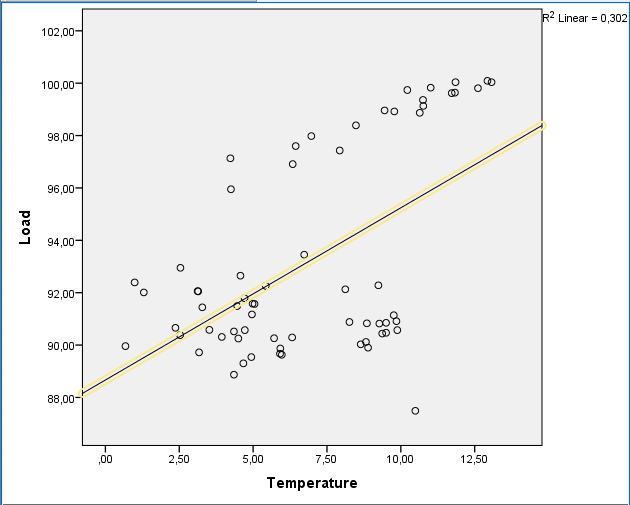Outdoor temperature and Cooling power Relation
Datacenters use cooling units to take away hot air exhausted by IT devices. Cooling energy depends on IT energy in the datacenter. But, we know with observation that, outdoor temperature has an effect on cooling load too. If weather is hot, cooling demand ascends for the same IT load.
This is because, efficiency of cooling units changes according to outdoor temperature. This efficiency gain is also the reason for increasing datacenter temperatures.
- You may want to know cooling load difference if a datacenter would be located in Erzurum (a cold city) or Istanbul (a relatively hot city).
- You may want to employ a fogging system to cool outdoor units of cooling system and you want to decide on savings.
These questions come to answer the following question:
What is the relation between outdoor temperature and cooling load?
We have a monitored system room. We monitor outdoor temperature, IT load and cooling load in the room hourly. We have collected data between 02.11.2014 - 06.01.2015 (66 sample of daily average of outdoor temperature and Cooling Load.). We have seen that IT load changes (variance is 0,85 KWh and Average is 134.8 KWh) not so much daily. So we accept it as constant.
We have averaged cooling energy consumption daily. So Load data says that for the specified day, we have consumed (lets say) 92KWh (hourly) energy for cooling.
We have also averaged temperatures daily. So temperature data says that for the specified day, we have (lets say) 3 centigrade degrees temperature.
We can find the relation using regression technique in statistics.We have found the following graph:
If we talk about statistical figures; R is 0.55. This means, good relation between outdoor temperature and cooling load. R square is 0.302. This means, Only 30 percent of variance in Cooling load is explained by the outdoor temperature (Others effects can be IT load changes, stuff done in the room, etc)
Intercept: 88.666 (Y axis value when Temperature=0)
Slope=0,658
We can even estimate the formula :
Cooling Load=88.666 + 0,658*OutdoorTemperature
This means, if you increase outdoor temperature 1 centigrade degrees, cooling load will increase 0,66 KWh
I have 2 notes to be careful.
1- Here IT load was approximately 135 KWh. If load is bigger than relation may be bigger
2- We have been using DX types cooling units and no free cooling.. Free cooling can change the picture enormously..
If you have any idea on meaningful application of this data, please provide it here as a comment for other folks..

Yorumlar
Yorum Gönder